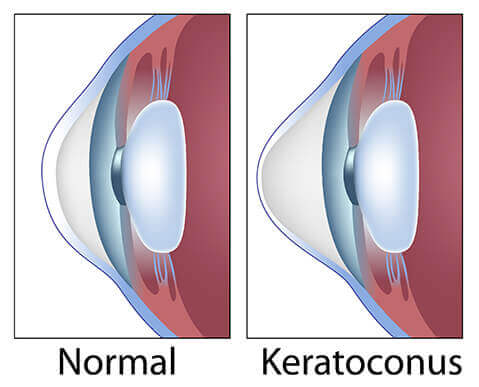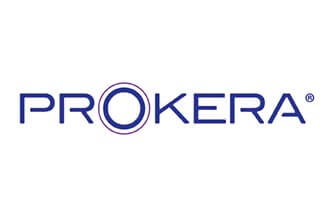Keratoconus, often referred to as “KC”, is a non-inflammatory eye condition in which the typically round dome-shaped cornea progressively thins and weakens, causing the development of a cone-like bulge and optical irregularity of the cornea. This progressive condition can cause vision distortion and can result in significant vision impairment.

The cornea is the clear covering on the front of the eye which bends, or refracts, light rays that focus on the retina in the back of the eye. A certain shape or curvature is required in order for light to focus exactly on the retina, rather than in front of it or behind it.
An improperly curved cornea may be corrected surgically or non-invasively to reduce or eliminate the need for eyeglasses or contact lenses. A thorough eye examination and consultation are necessary before a treatment decision can be made.
Corneal transplantation, or keratoplasty, is recommended when the cornea’s curvature is too steep or flat to be treated with other methods, or when extensive damage has occurred due to disease, infection or injury. Common problems that require transplantation are:
Transplantation involves replacing the damaged cornea with a healthy one from a donor (usually through an eye bank). Keratoplasty is a low-risk procedure – it is the most common type of transplant surgery and has the highest success rate.
During the procedure, a circular incision is made in the cornea. A disc of tissue is removed and replaced with healthy tissue; these discs may be thin (lamellar keratoplasty) or as deep as the entire cornea (penetrating keratoplasty), depending on the eye problem. Local or general anesthesia may be used. The entire procedure takes only 30-90 minutes.

The PROKERA® biologic corneal bandage is designed to help heal and protect the inflamed surface of the eye. Approved by the FDA, the PROKERA corneal bandage is an anti-inflammatory used to reduce pain, minimize scarring and promote healing. The PROKERA corneal bandage consists of a segment of amniotic membrane tissue fitted between two clear, flexible rings. The amniotic membrane, which is found within the human placenta, is donated by women who have been medically screened and have provided consent after a cesarean-section childbirth. The amniotic membrane is cryopreserved and saved in a tissue bank regulated by the FDA.
The PROKERA treatment option may be used in patients with the following conditions:
The PROKERA biologic corneal bandage protects the surface of the eye from external irritants, relieving pain and promoting healing. The PROKERA bandage is placed on the eye by a physician and patients should not remove it unless otherwise instructed. It is similar to a contact lens in shape, but slightly thicker, so some patients experience discomfort during a short adjustment period. Special instructions that must be followed after the insertion of the PROKERA corneal bandage will be provided.
160 Boston Ave.,
Altamonte Springs, FL 32701
4442 Curry Ford Rd.
Suite B
Orlando, FL 32812
2460 E Highway 50,
Clermont, FL 34711
10131 W Colonial Drive,
Ocoee, FL 34761
2917 Edgewater Drive,
Orlando, FL 32804
2875 Maguire Road,
Windermere, FL 34768
2225 North Central Avenue,
Kissimmee, FL 34741
345 West Michigan Street,
Orlando, FL 32806
787 Health Care Drive,
Orange City, FL 32763
5727 Canton Cove,
Winter Springs, FL 32708